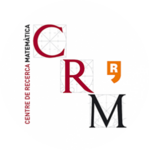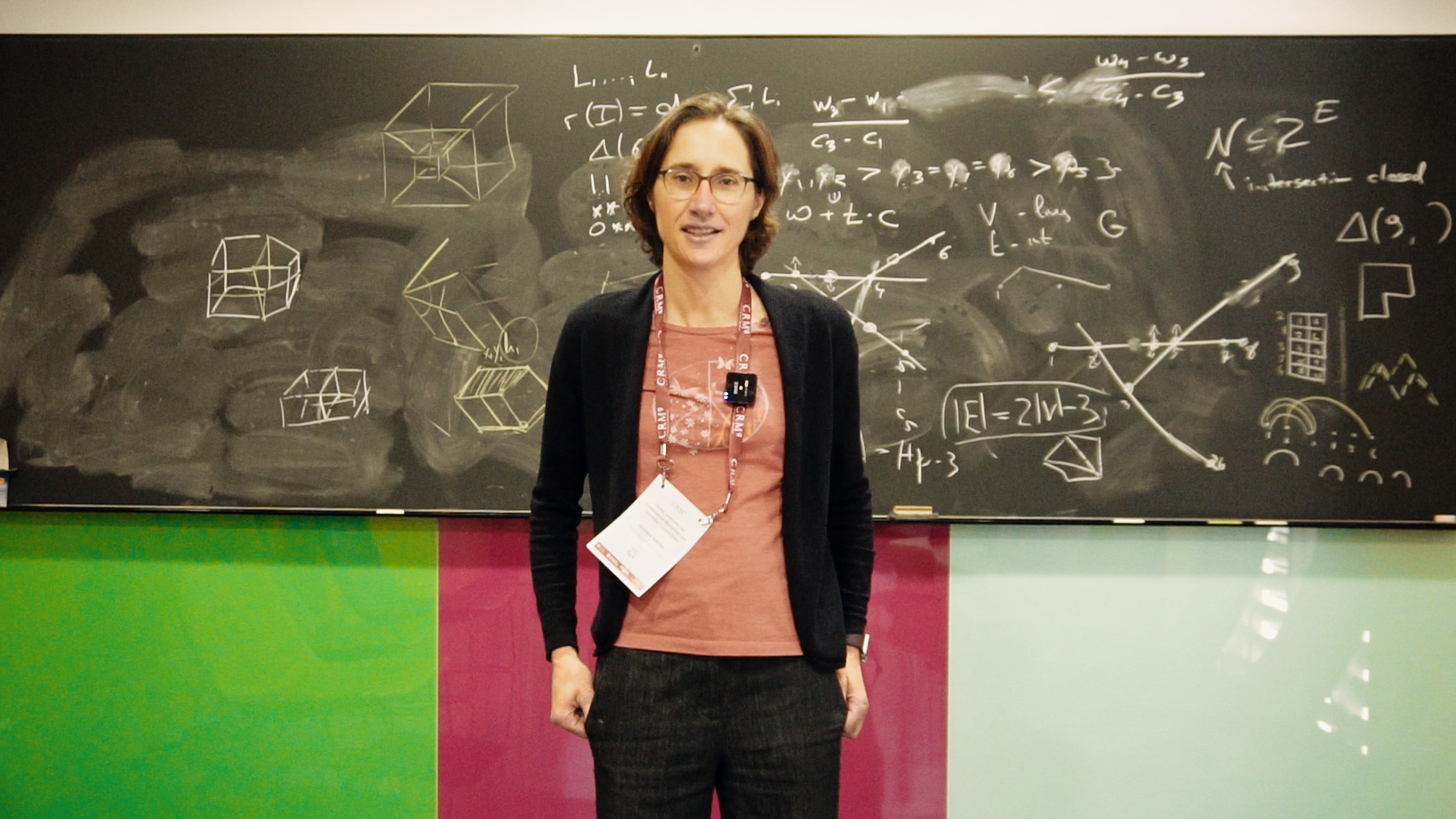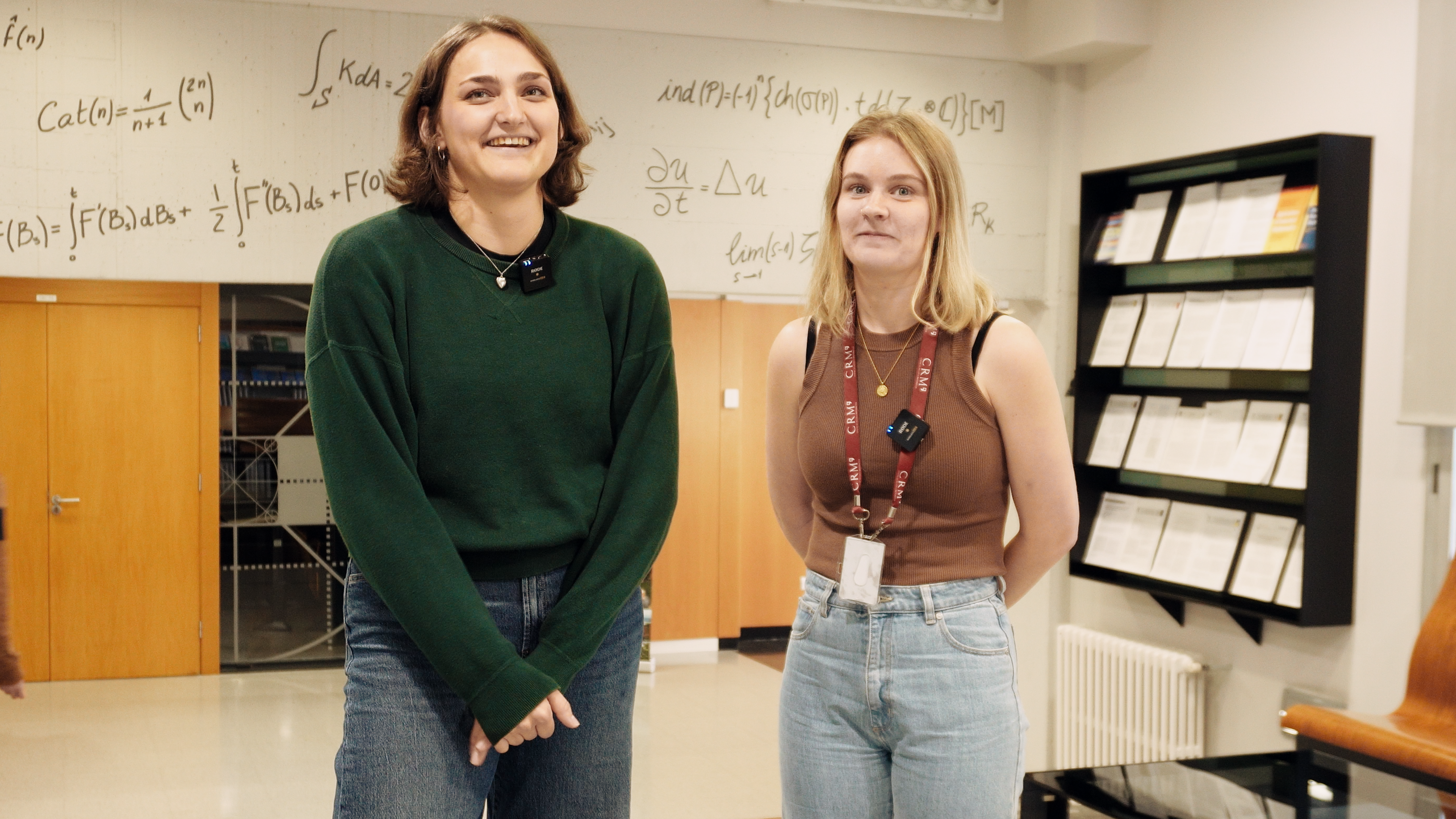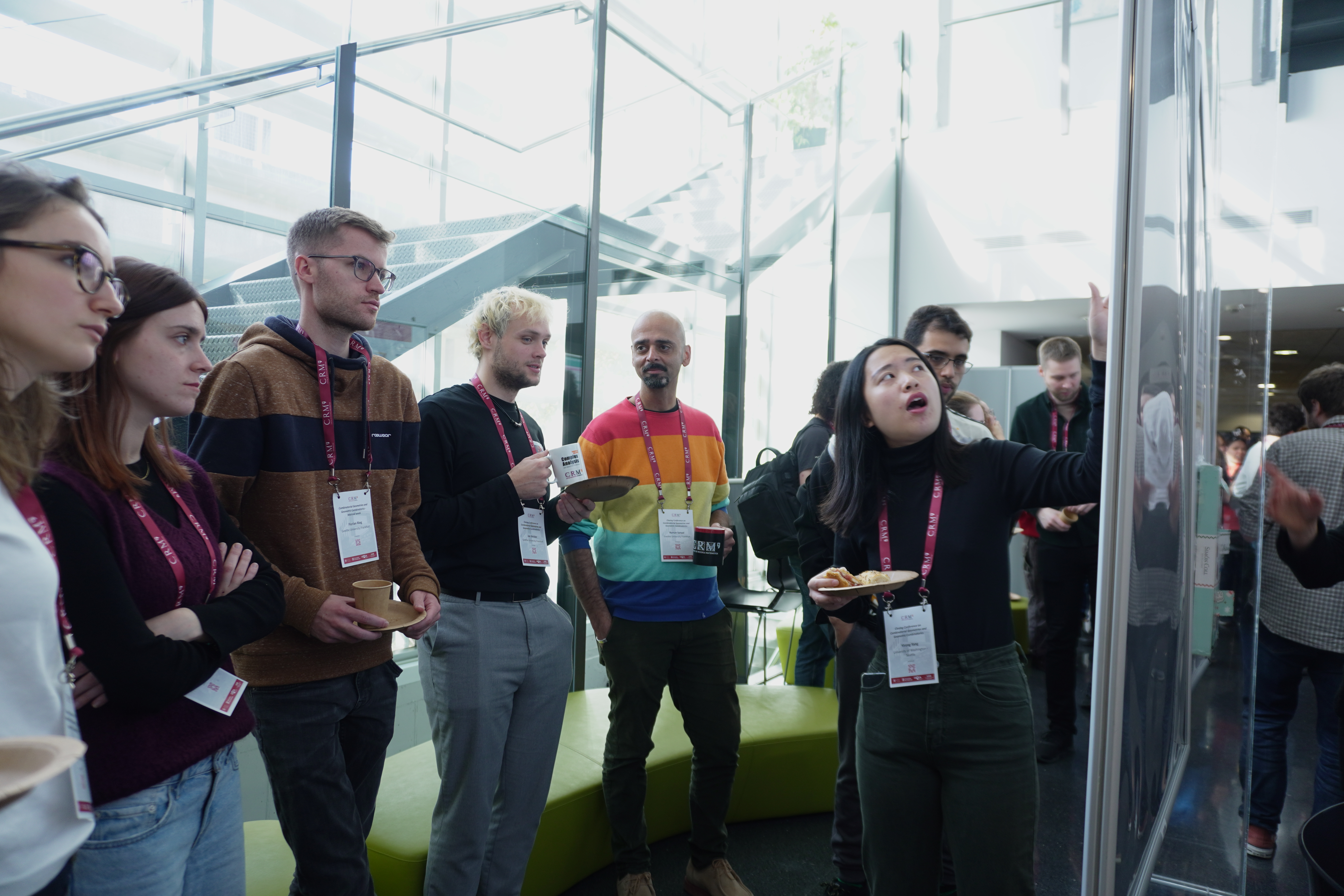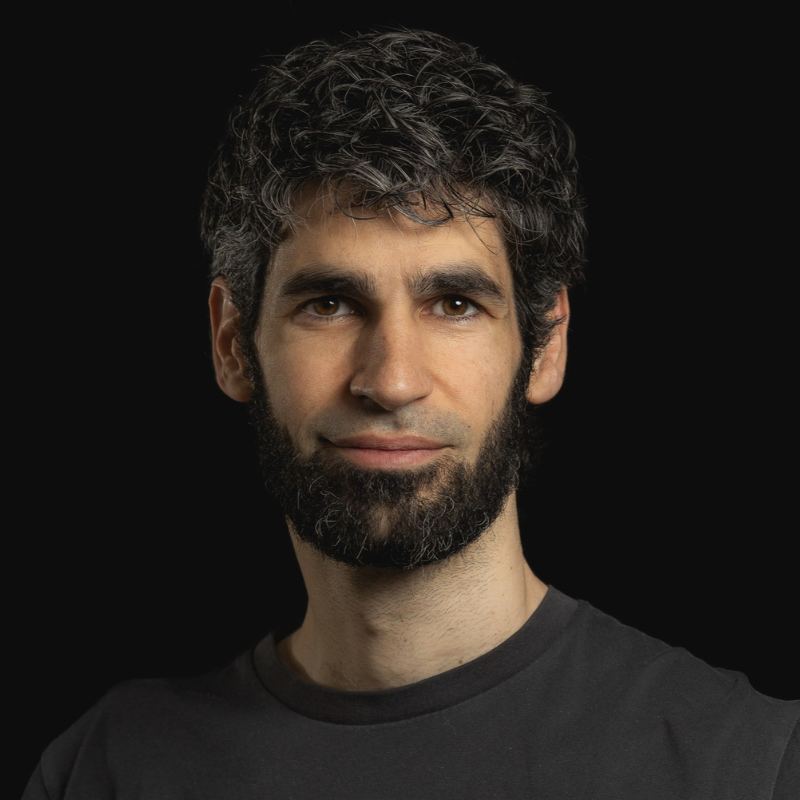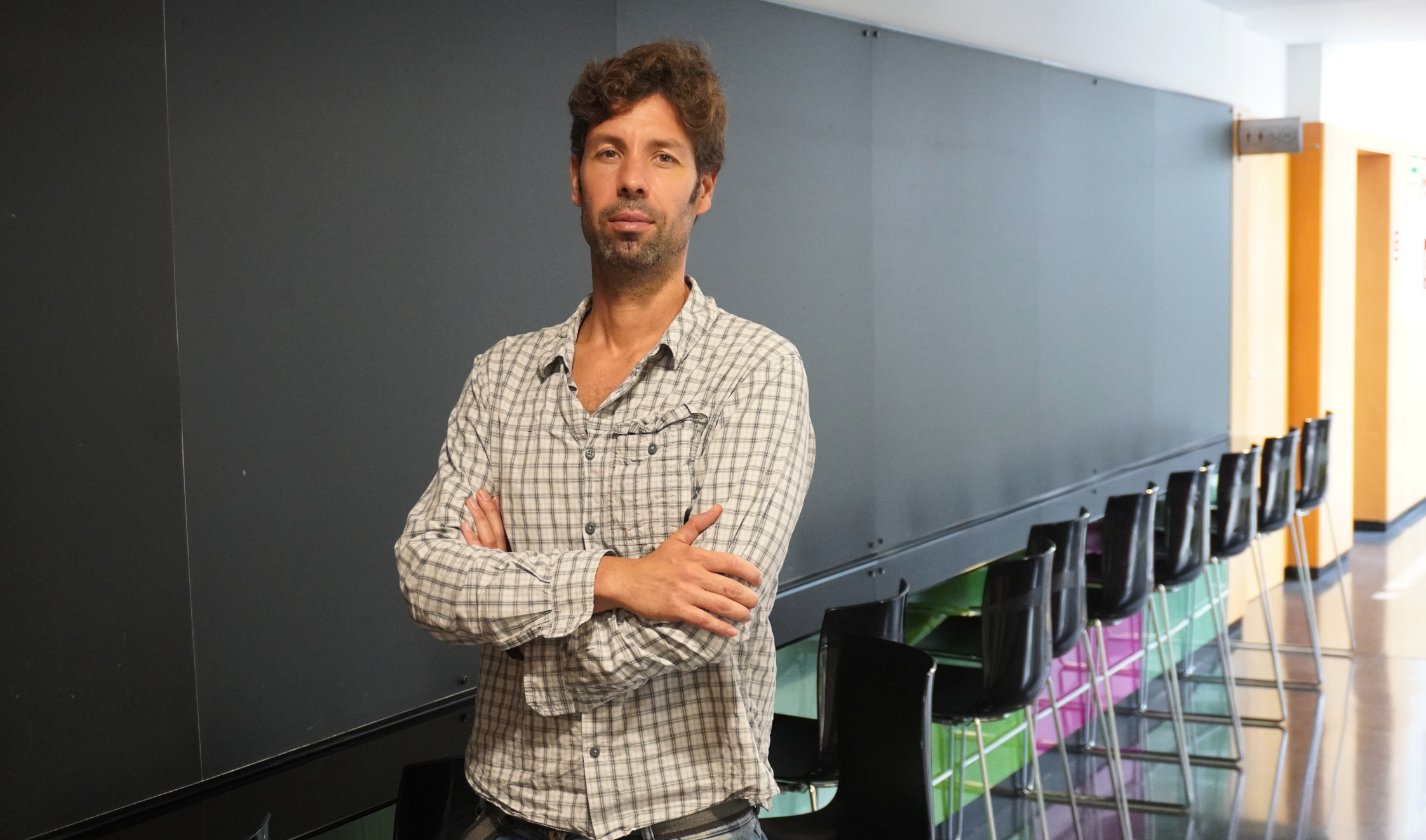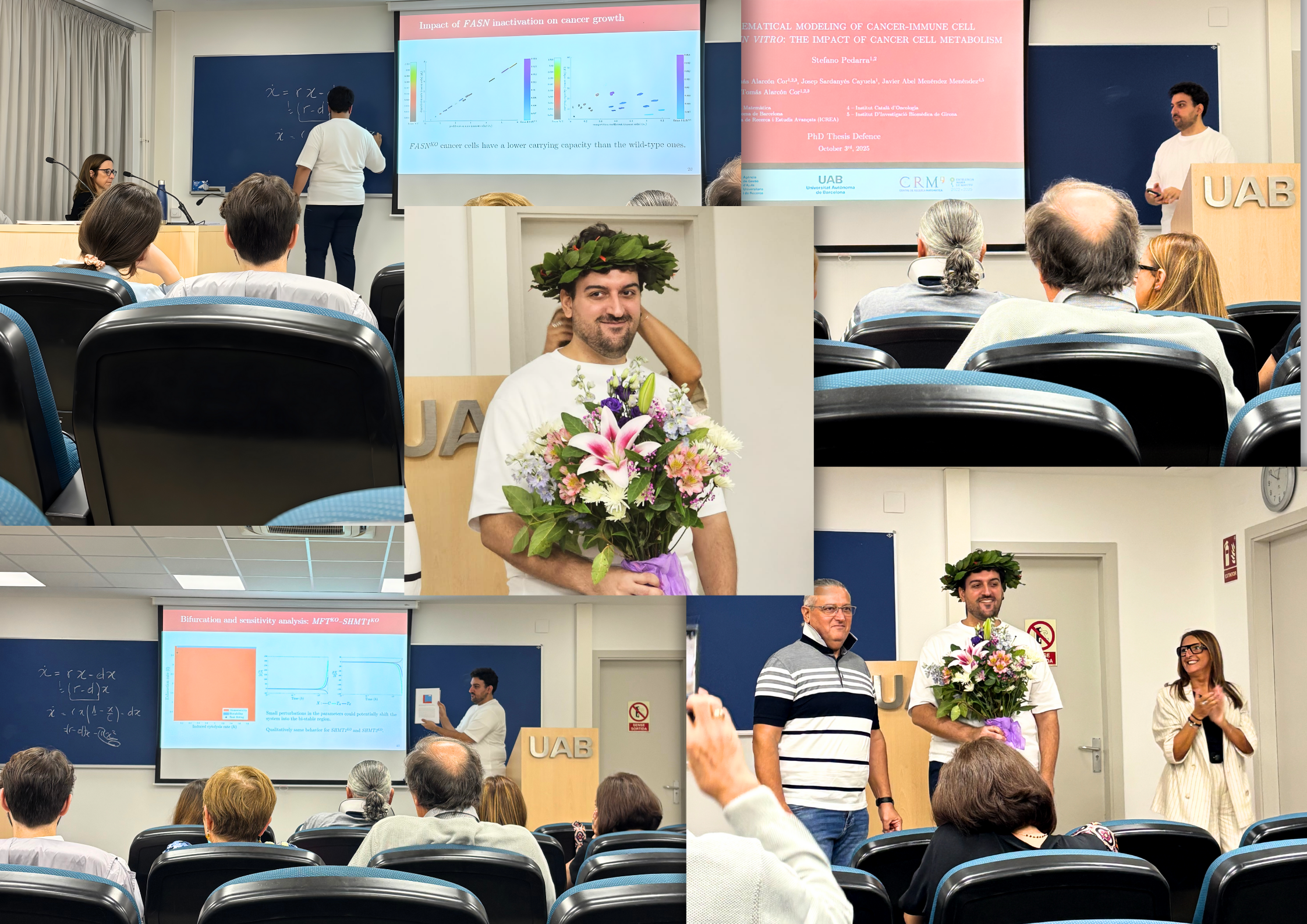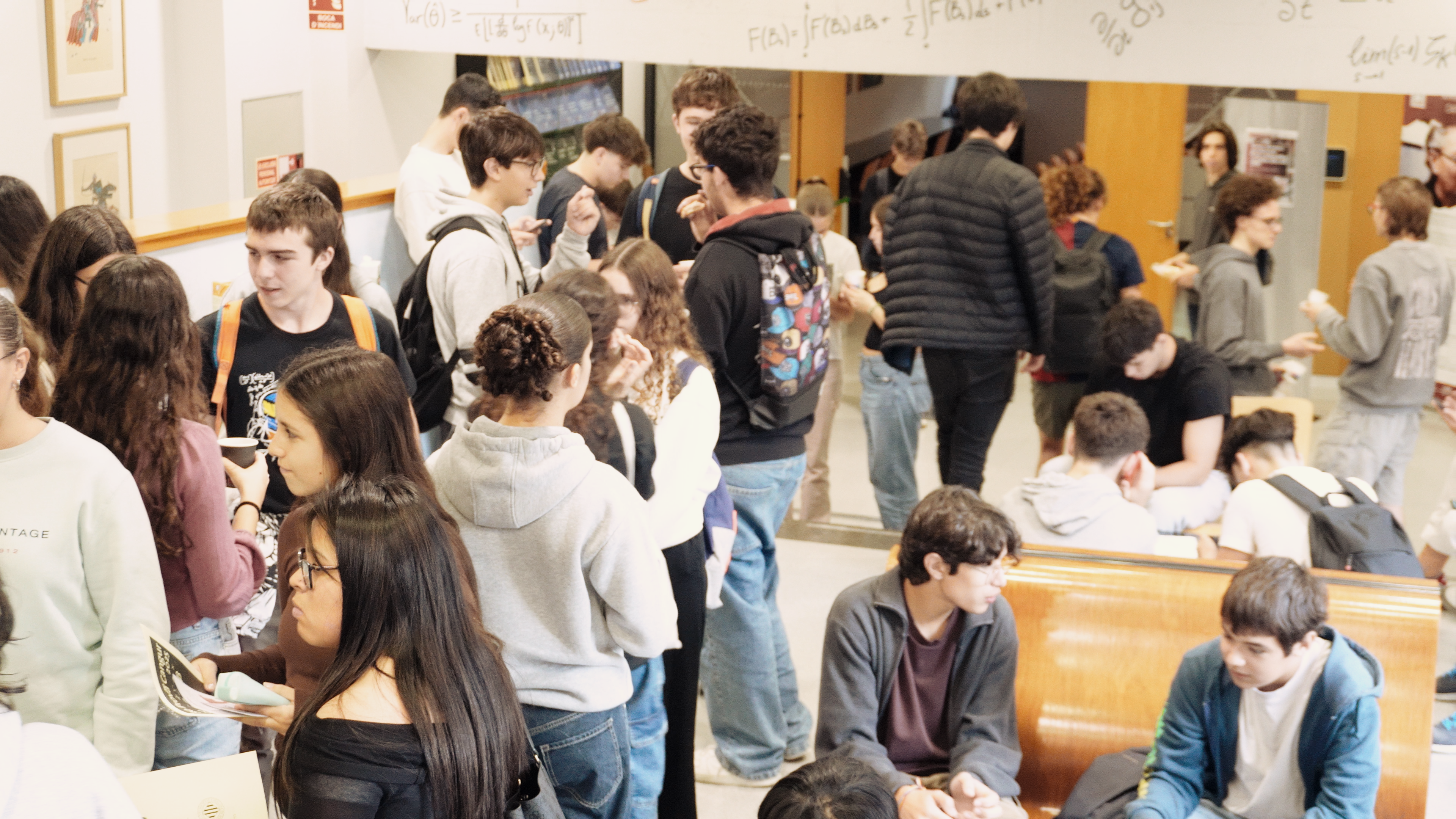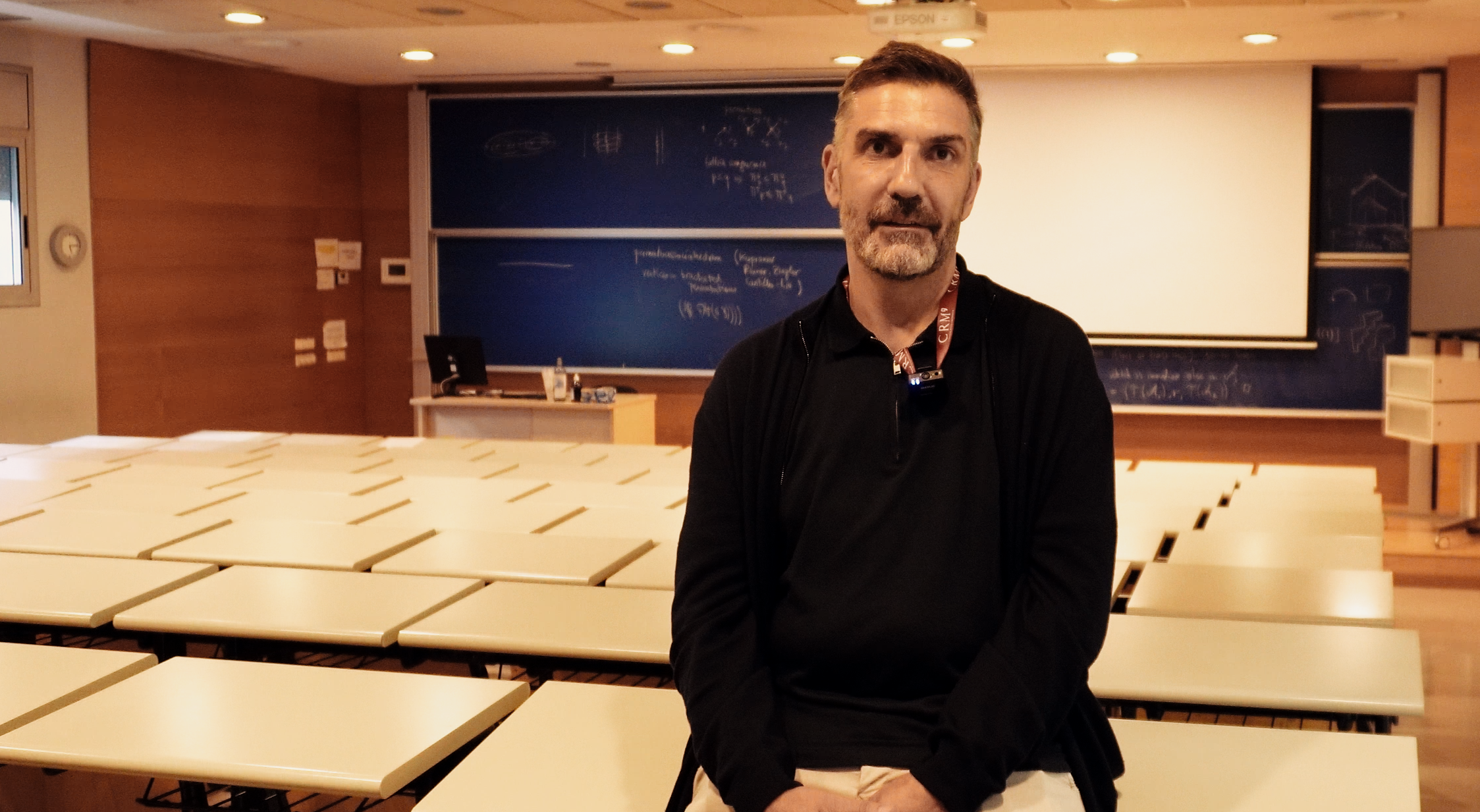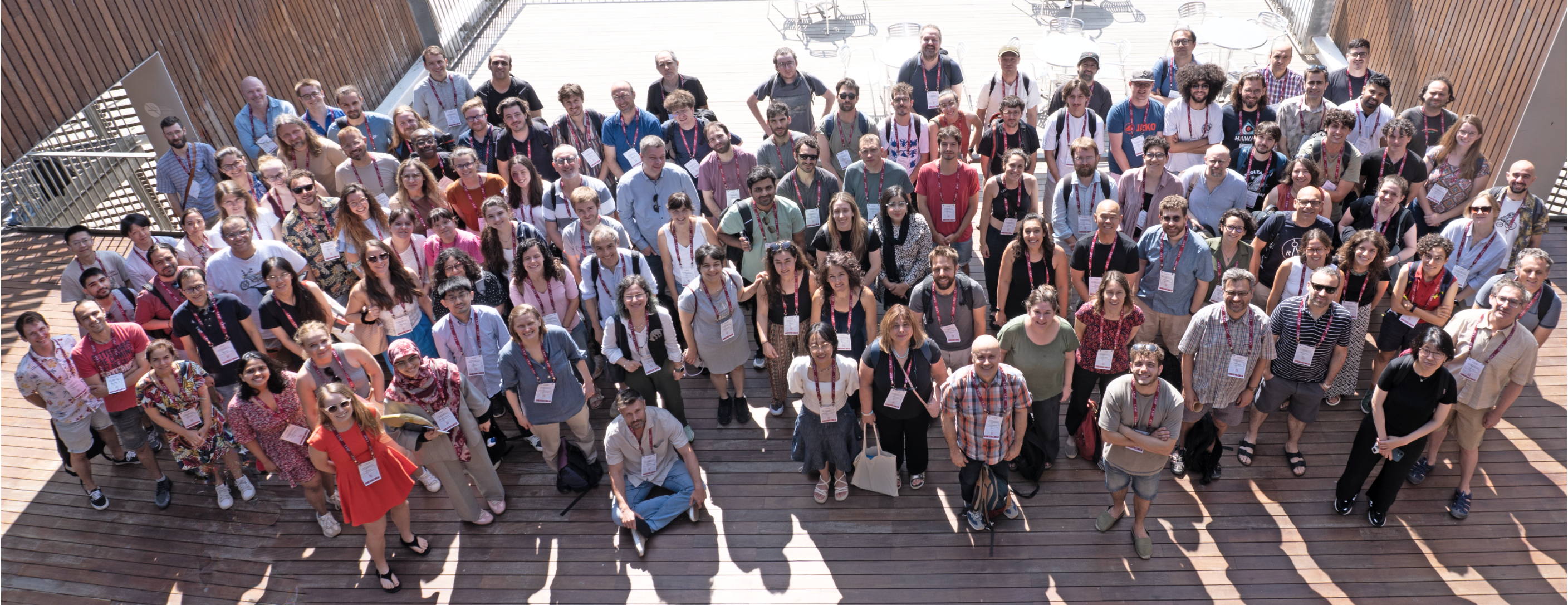
From June 17 to 20, the International Conference on Mathematical Neuroscience (ICMNS) held its 10th anniversary edition in Barcelona, drawing more than 150 participants from over 25 countries. Hosted at the Parc de Recerca Biomèdica de Barcelona (PRBB), this year’s conference confirmed its place as a major international gathering for those working at the intersection of mathematics, neuroscience, and theory-driven biology.
Organised by the Centre de Recerca Matemàtica (CRM), the 2025 edition featured a scientific programme that included 44 contributed oral presentations and more than 80 posters, complementing keynote lectures, invited talks, and various informal exchanges. The talks and posters explored topics such as neural coding, network dynamics, plasticity and learning, cognitive representations, field models, and the biophysics of information processing. With parallel sessions held in the PRBB Auditorium and the Marie Curie Room, the conference maintained a steady rhythm of discussion and cross-disciplinarity.

Each morning began with a keynote lecture that set the tone for the day. Elad Schneidman, from the Weizmann Institute, opened the conference by presenting a new class of models for decoding neural population activity. These models are based on sparse, nonlinear projections that require surprisingly small amounts of training data. They scale efficiently to populations of hundreds of neurons and are compatible with biologically plausible neural circuits. Schneidman also introduced a simple noise-driven learning rule and showed how homeostatic synaptic scaling enhances both efficiency and accuracy. The models not only represent a computational advance but also suggest a mechanism by which the brain might perform Bayesian inference and learn structure in high-dimensional neural code spaces.
On Wednesday, Tatyana Sharpee, from the Salk Institute, introduced a geometric perspective on learning in the brain. Her talk showed that neural responses in the hippocampus are organised according to a low-dimensional hyperbolic geometry, and that this geometry expands logarithmically as animals explore their environment. This expansion aligns with the theoretical maximum rate of information acquisition, indicating that neural representations continue to function optimally as they adapt with experience. Sharpee also proposed that similar geometric and entropic principles may apply to other biological systems, such as viral evolution and cell differentiation.

Thursday’s keynote was given by Tatjana Tchumatchenko, from the University of Bonn, who explored how neurons solve the complex problem of distributing thousands of protein species across extensive dendritic trees. Using a reaction-diffusion model, her team demonstrated that the task could be governed by an energy minimisation principle. Their predictions, based on computational simulations, aligned with large-scale experimental data on neuronal proteomes and translatomes. This suggests that neurons may favour energetically efficient strategies to maintain synaptic balance and support plasticity across their full morphology.
In addition to the keynotes, the invited speaker sessions brought technical depth and thematic diversity. Rafal Bogacz, from the University of Oxford, presented a predictive coding framework that respects biological constraints on synaptic plasticity. Áine Byrne, from University College Dublin, examined how the choice of neuron model influences the dynamics of gap junction coupled systems. Alexis Dubreuil (University of Bordeaux) explored how subpopulation structure in neural networks supports flexible computation. Stephanie Jones from Brown University introduced the Human Neocortical Neurosolver (HNN), a modelling tool designed to interpret EEG and MEG signals by linking them to circuit-level phenomena. Other invited speakers included Soledad Gonzalo Cogno, Anna Levina, Sukbin Lim, and Jonathan Touboul, each bringing distinct methodologies and perspectives to the ongoing dialogue between theory and neuroscience.
A Thriving Computational Neuroscience Ecosystem in Barcelona
The conference showcased a growing and increasingly diverse field. “The variety of approaches has expanded enormously,” noted Ernest Montbrió (University Pompeu Fabra), one of the organisers of the event, “and we’re seeing more interest every year from mathematicians, physicists, and engineers working on these problems. This diversity of perspectives truly enriches the programme.”

For Gemma Huguet (Universitat Politècnica de Catalunya-CRM), one of the local organisers, the strength of the Barcelona community played a central role. “Hosting this conference is a recognition of the vibrant neuro-computational scene we’ve built here. There’s a strong tradition of collaboration and interaction, and being able to welcome the ICMNS is also a way of giving visibility to the work we do.”
Her colleague Toni Guillamon (Universitat Politècnica de Catalunya-CRM) highlighted the evolution of the field itself: “Twenty years ago, computational neuroscience was focused on single cells or small networks. Today, with the explosion of data and new tools, the mathematical models have to be more sophisticated. We’re seeing more topology, more graph theory, and more mathematical depth, even if sometimes it’s hidden beneath the surface of the applications.”
The conference also placed a special emphasis on young researchers. As Alex Roxin (CRM) put it, “ICMNS offers a balanced environment. It’s not too small, not overwhelming. It’s the kind of setting where early-career scientists can step out of their comfort zone just enough to grow, present their work, get feedback, and connect with the wider community.”

ICMNS 2025 marked a decade of growth for a field still in expansion. As mathematics continues to reveal the hidden structures of brain function, and as neuroscience raises new questions for mathematical modelling, the future of this interdisciplinary partnership looks more promising than ever.
|
|
CRM CommPau Varela
|
Fuel Cells, Filtration, and Decades of Collaboration: A Conversation with Brian Wetton
Brian Wetton, from the University of British Columbia, spent last October at CRM collaborating with Tim Myers on computational models for filtration systems. His career has evolved from pure numerical analysis to applied mathematics with industrial partners, working...
From Barcelona to West Bengal: Chemistry Meets Mathematics to Enhance Water Filter Design
Researchers at the Centre de Recerca Matemàtica, in collaboration with IIT Kharagpur and UPC, have developed a mathematical model that accurately predicts the performance of fluoride-removal water filters made of mineral-rich carbon (MRC) and...
Polytopes, Matroids, and the Friends You Make: Martina Juhnke on Two Months at the CRM
The Centre de Recerca Matemàtica recently hosted a research programme on Combinatorial Geometries and Geometric Combinatorics, focusing on the overlap between polytopes and matroids. Martina Juhnke, a member of the scientific committee, reflects on how this programme...
BAMB! 2025: Participants Return to the CRM for Research Stays
In October 2025, the Centre de Recerca Matemàtica hosted Josefine Meyer (ISTA) and Cate MacColl (University of Queensland) for a month-long research stay following their participation in the BAMB! Summer School. Despite studying vastly different subjects, from...
Connecting Shapes, Patterns, and Ideas: the Closing Conference on Combinatorial Geometries and Geometric Combinatorics
During five days, the CRM hosted the Closing Conference of the MDM Focused Research Programme on Combinatorial Geometries & Geometric Combinatorics. The event featured plenary talks, contributed sessions, and posters on topics from matroids and polytopes to...
Xavier Ros-Oton among the 65 most cited mathematicians in the world
ICREA professor at the Universitat de Barcelona and CRM affiliated researcher Xavier Ros-Oton appears on Clarivate's Highly Cited Researchers 2025 list, which this year reinstates the mathematics category after two years of exclusion.Citations are a strange way to...
New Horizons for H- and Γ-convergence: From Local to Nonlocal (and viceversa)
The researchers Maicol Caponi, Alessandro Carbotti, and Alberto Maione extended the H- and Γ-convergence theories to the setting of nonlocal linear operators and their corresponding energies. The authors were able to overcome the limitations of classical localization...
Diego Vidaurre joins the CRM through the ATRAE talent programme
Diego Vidaurre has joined the Centre de Recerca Matemàtica through the ATRAE programme, bringing his expertise in modelling spontaneous brain activity across multiple data modalities. His work focuses on understanding how the brain’s intrinsic dynamics shape...
El CRM a la Setmana de la Ciència: una ruta entre dones, formes i pensament
El CRM va participar en la 30a edició de la Setmana de la Ciència amb una ruta guiada que va combinar les biografies de dones matemàtiques amb obres d'art del centre, connectant ciència, història i creació artística.El 12 de novembre, el Centre de Recerca Matemàtica...
Stefano Pedarra Defends his PhD Thesis on the Interaction between Tumour Cells and the Immune System
Stefano Pedarra has completed his PhD at the Centre de Recerca Matemàtica with a thesis exploring how tumour-cell metabolism shapes the immune system’s ability to fight cancer. His work brought mathematics and biology into direct conversation, from building models to...
Els estudiants participants a la prova de preselecció de Bojos per les Matemàtiques visiten el CRM
La prova de preselecció de Bojos per les Matemàtiques va reunir estudiants de tot Catalunya a la UAB i al CRM, amb presentacions a càrrec de Montse Alsina, presidenta de la Societat Catalana de Matemàtiques, Núria Fagella, degana de la Facultat de Matemàtiques i...
Jordi Mompart highlights the role of artificial intelligence in sport at the XIII GEFENOL-DIFENSC Summer School
The XIII GEFENOL-DIFENSC Summer School gathered over thirty researchers from across Europe to explore how statistical physics helps explain complex phenomena in biology, ecology, networks, and social systems. In his closing lecture, Jordi Mompart (UAB) examined how...

